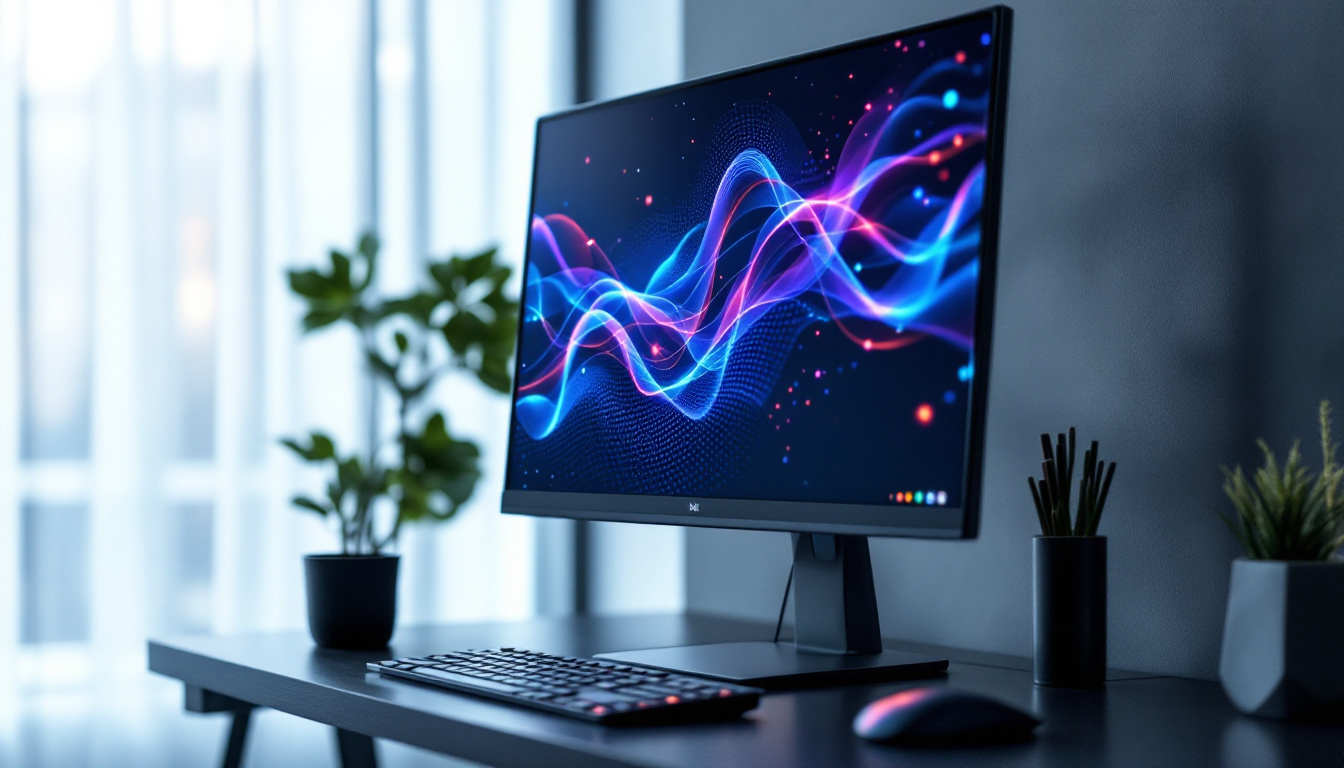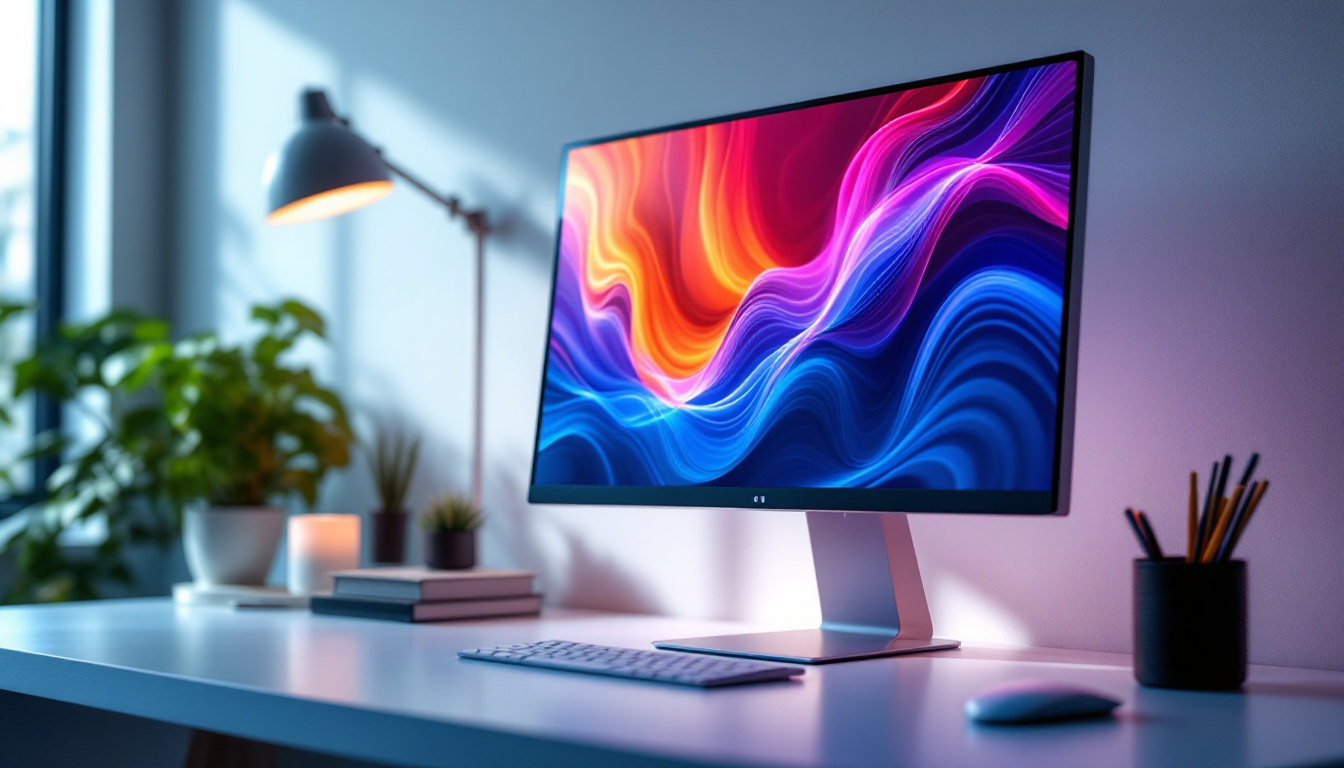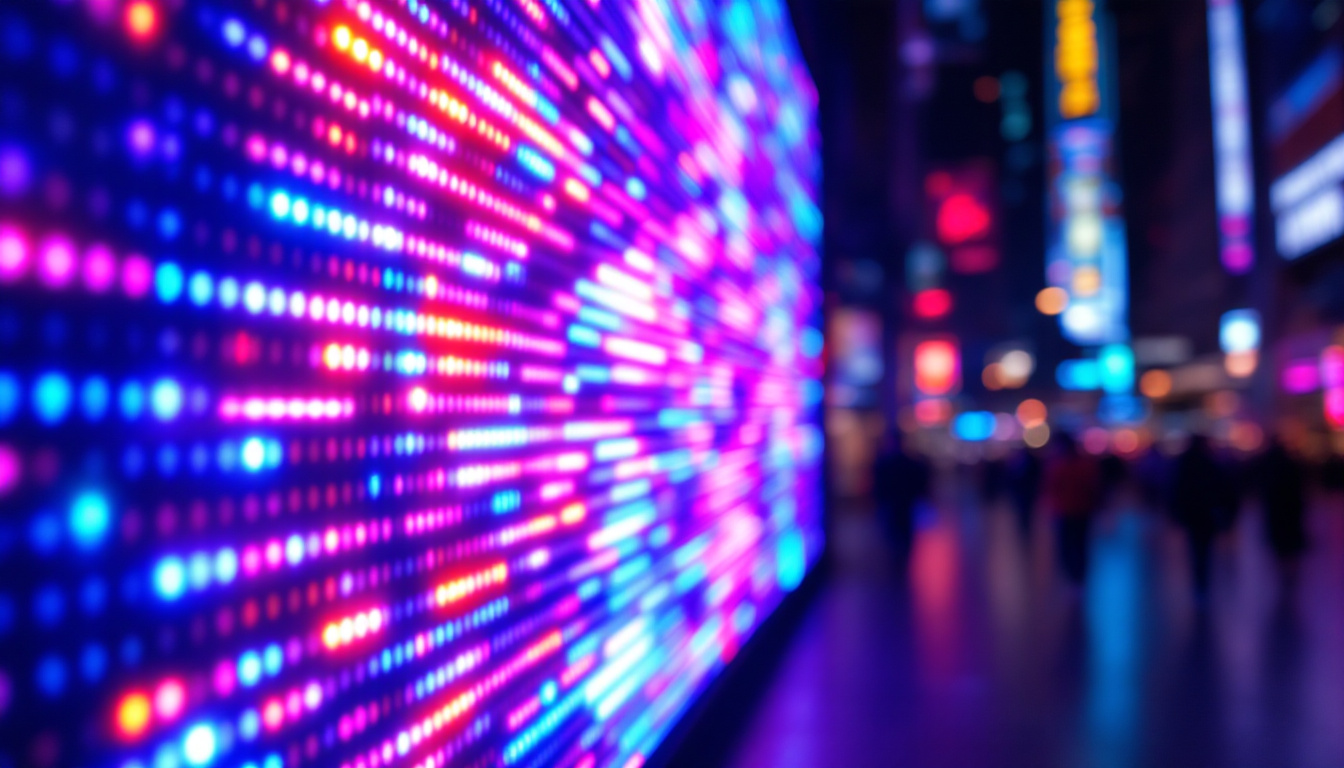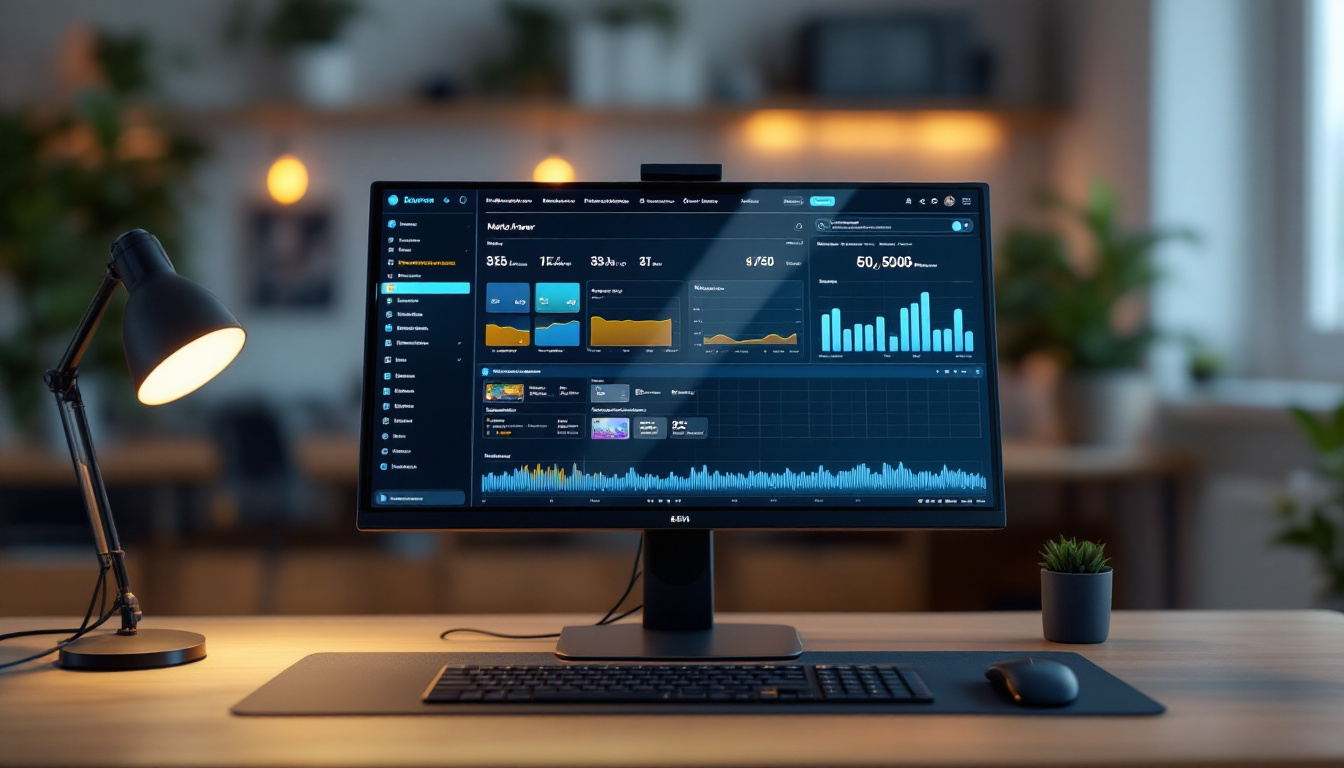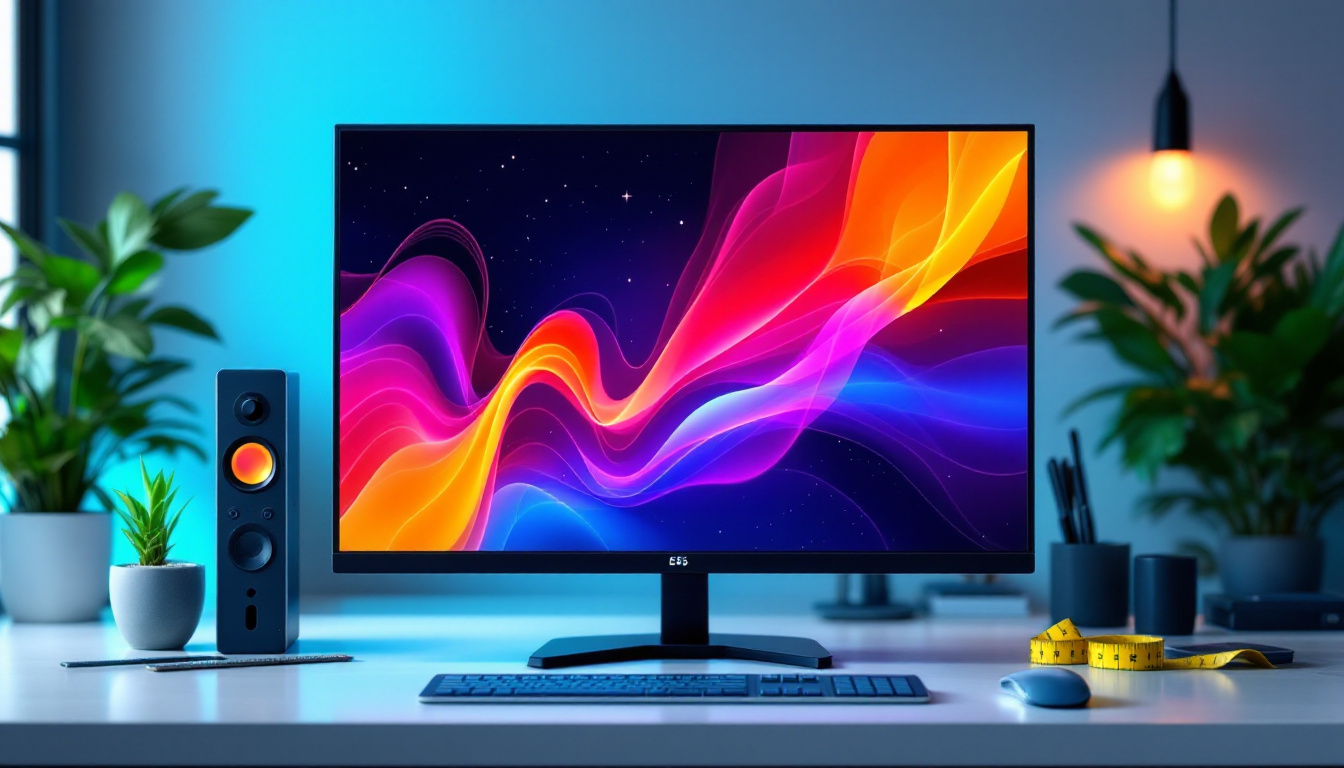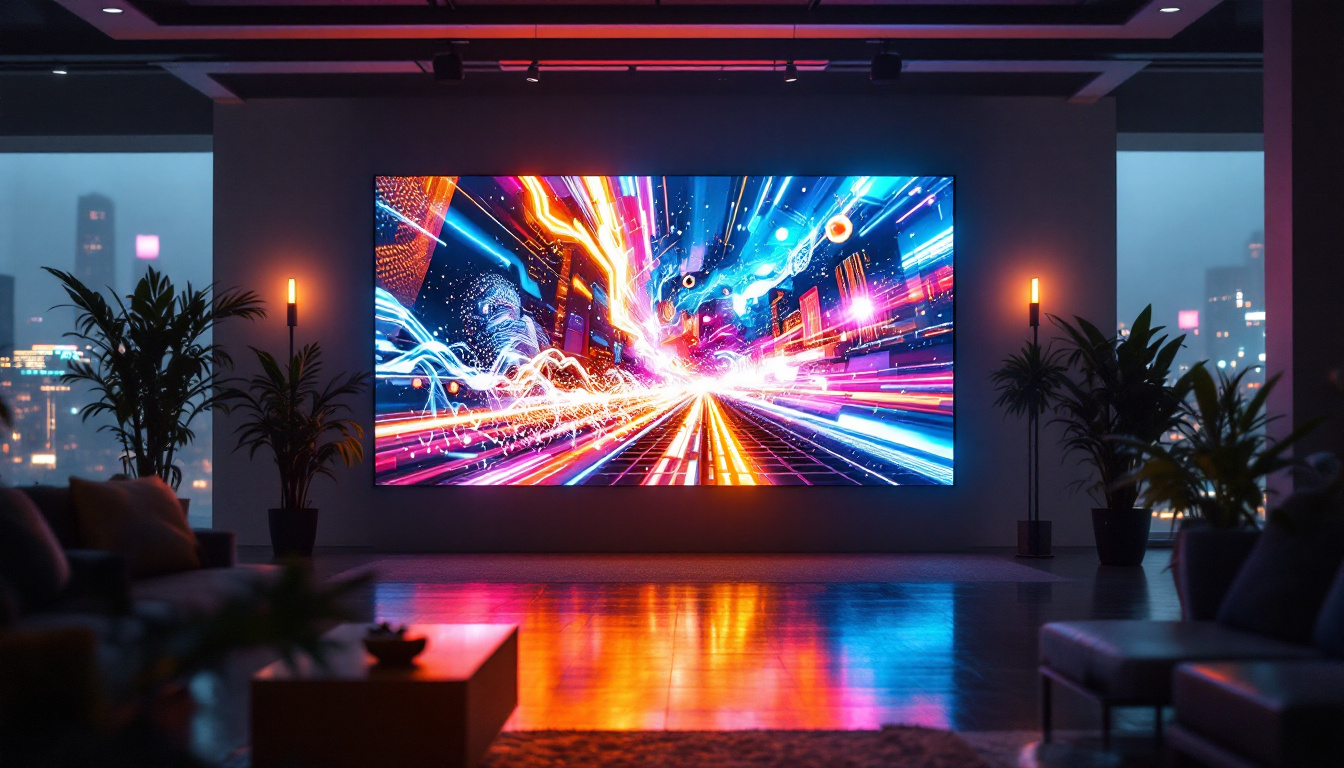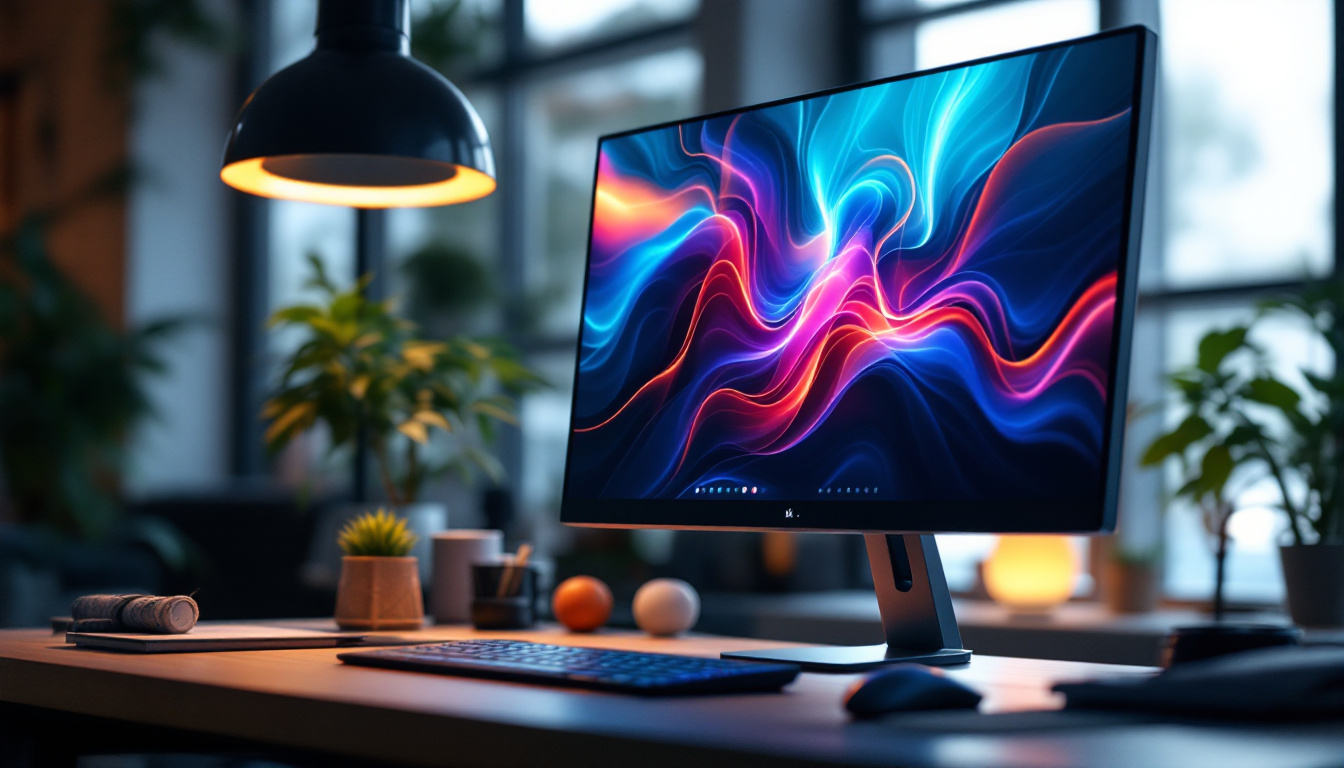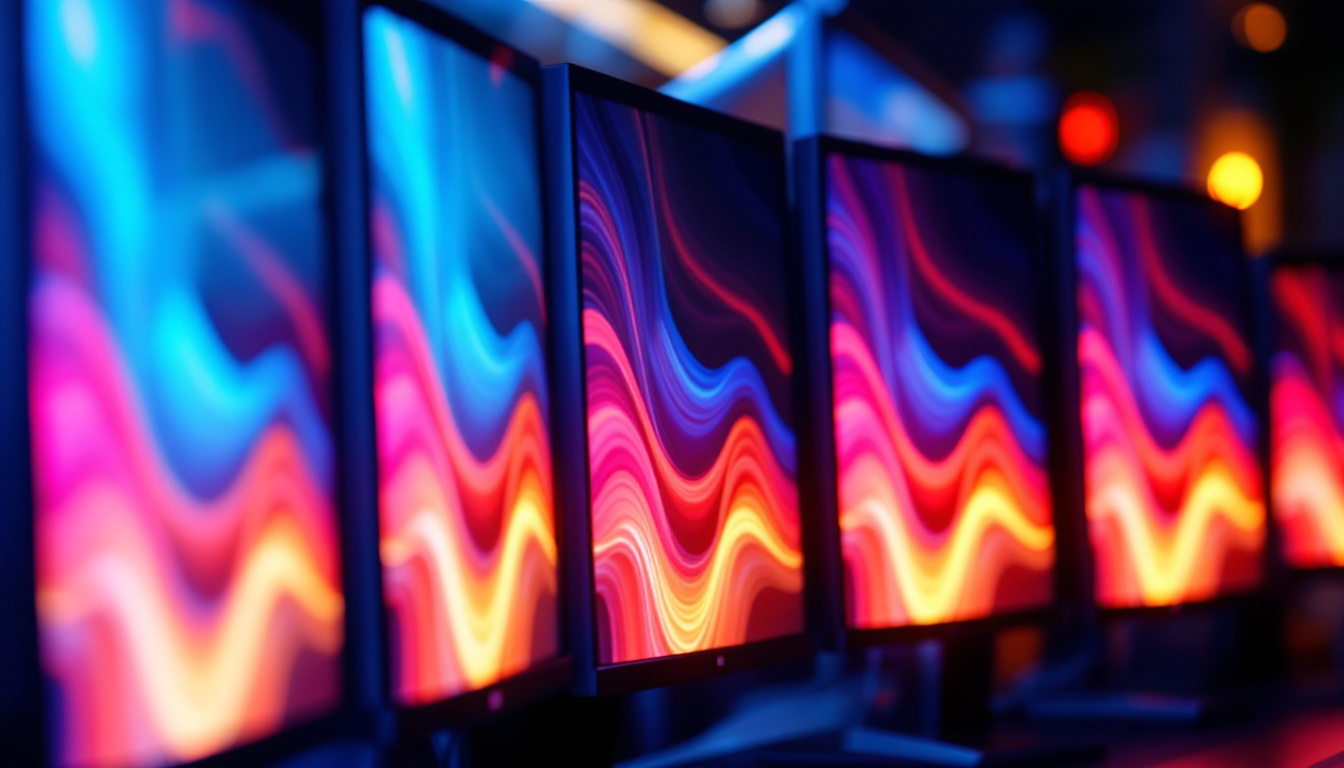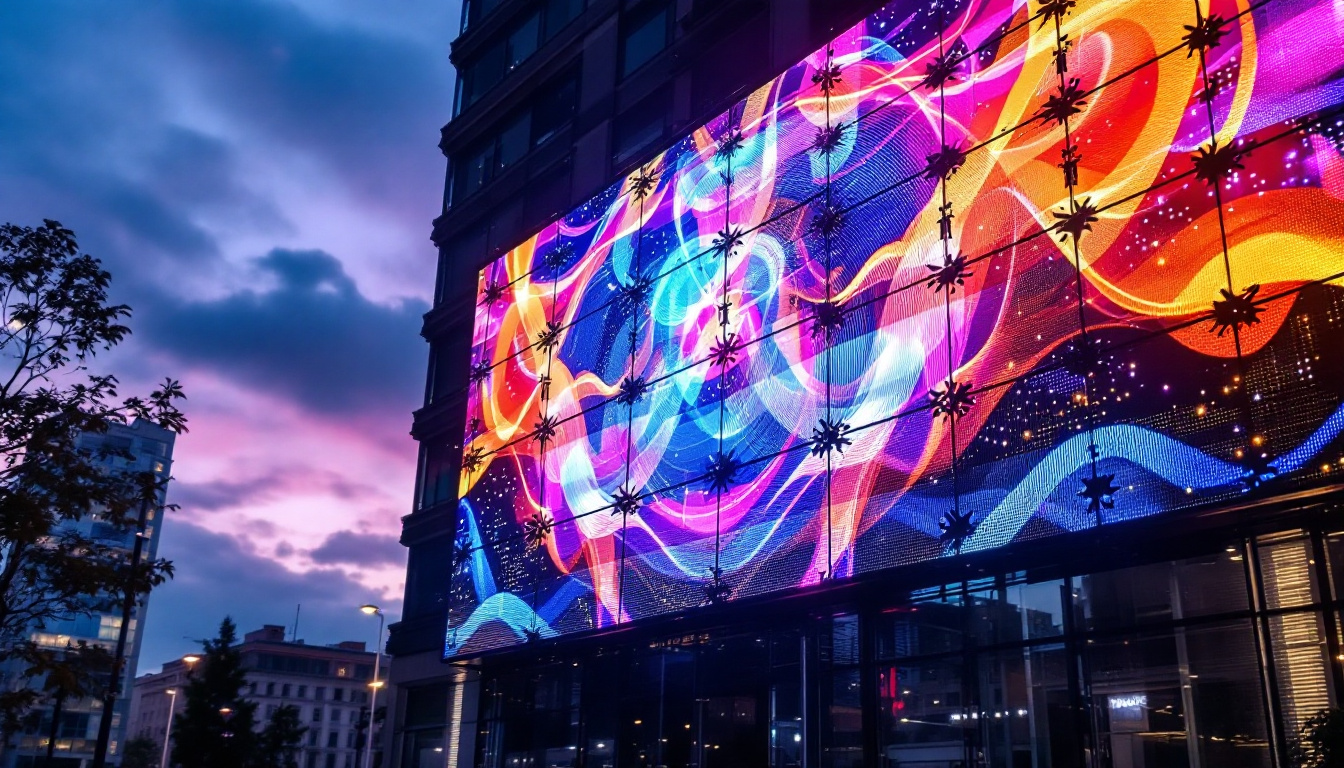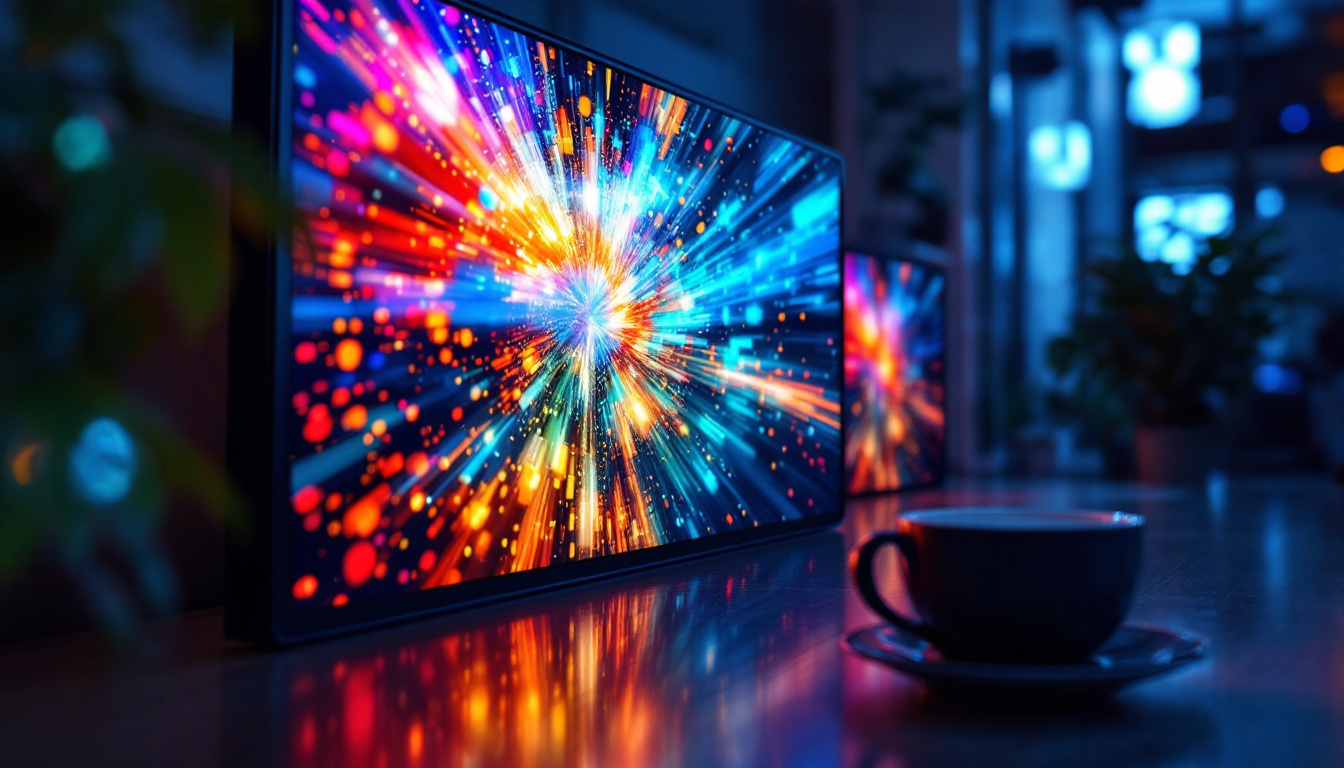Touch Screen LCD Displays: LED Display Explained
In the modern digital landscape, touch screen LCD displays have become ubiquitous, appearing in everything from smartphones to large-scale interactive kiosks. Their combination of user-friendly interfaces and vibrant visuals has revolutionized how we interact with technology. This article delves into the mechanics of touch screen LCD displays, the role of LED technology, and their applications across various industries.
Understanding LCD Technology
Liquid Crystal Display (LCD) technology has transformed the way images are presented on screens. It utilizes liquid crystals that modulate light to create images. This section will explore the fundamental principles behind LCD technology and how it integrates with touch screen capabilities.
How LCD Works
At its core, an LCD consists of two layers of glass or plastic that sandwich a liquid crystal solution. When an electric current passes through the liquid crystals, they align in a way that either blocks or allows light to pass through. This process creates the images displayed on the screen. The backlighting, typically provided by LEDs, enhances brightness and color accuracy.
The combination of these elements allows for the creation of high-resolution images with excellent color reproduction. LCDs are favored for their energy efficiency and slim profile, making them ideal for a wide range of applications, from televisions to portable devices. Additionally, advancements in LCD technology have led to the development of various types, such as IPS (In-Plane Switching) and TN (Twisted Nematic) panels, each offering distinct advantages in viewing angles and response times. This diversity in panel technology caters to different consumer needs, from gamers seeking rapid refresh rates to graphic designers requiring precise color fidelity.
The Role of Backlighting
Backlighting is crucial in LCD technology, as it illuminates the liquid crystals to produce visible images. Traditionally, cold cathode fluorescent lamps (CCFLs) were used for backlighting, but they have largely been replaced by LED technology due to several advantages.
LED backlighting offers improved energy efficiency, longer lifespan, and better color accuracy. Furthermore, it allows for thinner designs, which is essential in modern devices where space is at a premium. The integration of LED backlighting has significantly enhanced the performance of LCD displays, making them more appealing to consumers. Moreover, innovations such as local dimming and edge-lit configurations have further refined the backlighting process, allowing for deeper blacks and brighter whites, thus enhancing the overall viewing experience. As manufacturers continue to push the boundaries of LCD technology, we can expect to see even more sophisticated lighting techniques that will elevate the quality of displays in the future.
Touch Screen Technology Explained
Touch screen technology enables users to interact directly with what is displayed, eliminating the need for traditional input devices like keyboards and mice. This section will discuss the various types of touch screen technologies and their functionalities.
Types of Touch Screens
There are several types of touch screen technologies, each with its unique method of detecting touch. The most common types include resistive, capacitive, and infrared touch screens.
Resistive touch screens consist of two flexible layers separated by a small gap. When pressure is applied, the layers touch, completing an electrical circuit that registers the touch. This technology is affordable and works well with gloves or styluses, making it suitable for various environments. They are often found in industrial settings and kiosks, where durability and cost-effectiveness are paramount. However, resistive screens typically offer lower clarity and responsiveness compared to their capacitive counterparts.
Capacitive touch screens, on the other hand, utilize the electrical properties of the human body. They are made up of a glass panel coated with a transparent conductor. When a finger touches the screen, it disrupts the electrostatic field, allowing the device to register the touch. Capacitive screens are known for their sensitivity and multi-touch capabilities, making them popular in smartphones and tablets. The clarity and brightness of capacitive screens are generally superior, providing a more vibrant display that enhances the visual experience for users. Additionally, advancements in this technology have led to the development of edge-to-edge screens, which maximize the display area and provide a sleeker look to devices.
Multi-Touch Functionality
Multi-touch technology has revolutionized user interaction by allowing multiple touch points to be recognized simultaneously. This feature enables gestures such as pinch-to-zoom and swipe, enhancing the overall user experience. The ability to perform complex gestures has made multi-touch screens indispensable in modern computing, as they allow for more intuitive navigation and control.
Multi-touch functionality is particularly useful in applications requiring complex interactions, such as graphic design software or gaming. As a result, devices equipped with this technology are often favored in both consumer and professional markets. Furthermore, the integration of multi-touch capabilities has led to the development of innovative applications, such as virtual keyboards and interactive educational tools, which leverage gesture recognition to create engaging and immersive experiences. The ongoing evolution of multi-touch technology continues to push the boundaries of how users interact with devices, paving the way for future advancements in user interface design and functionality.
LED Display Technology
LED displays are a significant advancement in screen technology, offering enhanced brightness, energy efficiency, and color accuracy. Understanding the principles behind LED displays is essential for appreciating their role in modern touch screen LCD displays.
What is an LED Display?
An LED display uses light-emitting diodes (LEDs) to produce images. Unlike traditional LCDs that require backlighting, LED displays can generate light directly from the diodes. This results in brighter images with higher contrast ratios, making them ideal for various environments, including outdoor settings.
LED displays can be categorized into two types: direct view and backlit. Direct view LED displays are composed of individual LEDs arranged in a grid, while backlit LED displays use LEDs to illuminate an LCD panel. Both types offer distinct advantages, depending on the application.
Benefits of LED Technology
LED technology offers numerous benefits over traditional display technologies. One of the most significant advantages is energy efficiency. LED displays consume less power, which is crucial for portable devices and large installations alike.
Additionally, LED displays have a longer lifespan compared to other technologies. This longevity reduces maintenance costs and environmental impact, making them a sustainable choice for consumers and businesses.
Applications of Touch Screen LCD Displays
Touch screen LCD displays find applications across a multitude of industries, thanks to their versatility and user-friendly design. This section will explore some of the most prominent applications of this technology.
Consumer Electronics
In the realm of consumer electronics, touch screen LCD displays are prevalent in smartphones, tablets, and laptops. Their intuitive interfaces allow users to navigate through applications and content seamlessly.
Smartphones, in particular, have become an extension of daily life, with touch screens enabling quick access to information, communication, and entertainment. The integration of multi-touch capabilities further enhances user experience, allowing for more interactive and engaging applications.
Healthcare Applications
In healthcare, touch screen LCD displays are increasingly used in medical devices and patient monitoring systems. Their ease of use allows healthcare professionals to access vital information quickly and efficiently, improving patient care.
Moreover, touch screens in medical settings can facilitate better communication between patients and healthcare providers. For example, interactive displays can be used for educational purposes, helping patients understand their conditions and treatment options.
Industrial and Commercial Use
Touch screen LCD displays are also widely utilized in industrial and commercial settings. They can be found in kiosks, point-of-sale systems, and control panels. Their durability and resistance to wear make them suitable for environments where traditional interfaces may fail.
In retail, touch screens enhance customer engagement by providing interactive experiences. Customers can browse products, place orders, and even check out without needing assistance, streamlining the shopping process.
Future Trends in Touch Screen Technology
The future of touch screen technology is poised for exciting advancements. As technology evolves, several trends are emerging that will shape the next generation of touch screen LCD displays.
Advancements in Display Quality
One of the most significant trends is the continuous improvement in display quality. Higher resolutions, better color accuracy, and enhanced brightness levels are expected to become standard features in future touch screen LCD displays. Technologies such as OLED (Organic Light Emitting Diode) are also gaining traction, offering even more vibrant colors and deeper blacks.
As display technology evolves, consumers can expect a more immersive visual experience, whether for entertainment, work, or education.
Integration of AI and Machine Learning
Artificial intelligence (AI) and machine learning are set to play a crucial role in the evolution of touch screen interfaces. These technologies can enhance user interactions by personalizing experiences based on user behavior and preferences.
For example, AI can enable predictive text input, smart gesture recognition, and adaptive interfaces that respond to user needs in real time. This level of personalization will make touch screen interactions more intuitive and efficient.
Enhanced Durability and Sustainability
As environmental concerns continue to rise, manufacturers are focusing on creating more durable and sustainable touch screen displays. Innovations in materials and production processes aim to reduce waste and improve the longevity of devices.
Furthermore, the development of recyclable components and energy-efficient manufacturing practices will contribute to a more sustainable future for touch screen technology, aligning with global efforts to minimize environmental impact.
Conclusion
Touch screen LCD displays, enhanced by LED technology, have transformed the way users interact with devices across various sectors. Their versatility, energy efficiency, and user-friendly interfaces make them indispensable in today’s digital world.
As technology continues to advance, the future of touch screen displays promises even more exciting developments. From improved display quality to the integration of AI and sustainability initiatives, the evolution of touch screens will undoubtedly enhance user experiences and open new possibilities in various applications.
In summary, understanding the mechanics and applications of touch screen LCD displays is essential for anyone looking to navigate the ever-evolving landscape of technology. With their wide-ranging applications and continuous advancements, touch screen displays are set to remain at the forefront of innovation for years to come.
Discover Cutting-Edge LED Display Solutions with LumenMatrix
Ready to experience the future of display technology today? LumenMatrix is at the forefront of LED innovation, offering a wide array of advanced LED display modules designed to bring your brand to life. From vibrant Indoor and Outdoor LED Wall Displays to dynamic Vehicle and Sports LED Displays, our solutions are crafted to captivate and engage your audience. Embrace the power of visual communication with our LED Poster Displays, Floor LED Displays, and the revolutionary All-in-One and Transparent LED Displays. Elevate your message with clarity and impact—check out LumenMatrix LED Display Solutions and transform your space into a mesmerizing visual experience.









